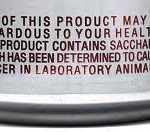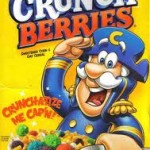Foods with additives are all over your grocery store shelves. However, they might be hard to recognize. They don’t carry a big sign that reads “I’ve got azodicarbonamide and artificial dyes”, they disguise themselves as bright colors, crunchy textures, and preservatives that can’t be seen.

Many of the laboratory-born items in our food were created to solve an original problem. Most created the problem first then offered a pseudo-solution. Either way, our food supply is now saturated with chemicals that preserve, color, bind, sweeten, replace fats, appear fresher, or simply create a whole new food item.
Food with additives are prevalent throughout the United States, but have been banned in many other countries. I won’t bore you with a long list of multi-syllabic chemicals on food, but be aware that food scientists and marketers are using substances not found in food to make food from:
Artificial Sweeteners – created in response to the “fat free” craze. Strangely, real sugar has no fat. Artificial sweeteners are supposed to reduce overall calories in food and have been a topic of debate for decades.
 Studies linking Saccharin to cancer in the 1970s had the substance wearing a “hazardous to your health” label. But, according to the National Cancer Institute, there is no sound scientific evidence that any artificial sweetener causes serious health problems.
Studies linking Saccharin to cancer in the 1970s had the substance wearing a “hazardous to your health” label. But, according to the National Cancer Institute, there is no sound scientific evidence that any artificial sweetener causes serious health problems.
Others debate that all sugars, artificial or otherwise found in soft drinks, snacks, and most fast food are contributing to obesity, diabetes, and food allergies. People that avoid sugary drinks and eat foods that have 1 ingredient avoid artificial sweeteners.
Preservatives – they help the food industry so that their products always look fresh and don’t spoil. Natural preservatives include types of fats, quick freezing, and ice glazing. Many foods retain their freshness with massive quantities of salt. Salt may be natural, but 700mg in your Hungry Man Dinner can create circulatory issues.
Foods with preservatives also include a long list of chemical compounds to keep them fresh in transit or on the store shelf. You avoid ALL these chemicals when you buy wholesome foods from your local market that were not processed and packaged.
Anything you have to microwave most probably has a long list of preservatives.
Coloring Agents and Food Dyes – these make your food look appealing. Whether it’s the rainbow of Fruit Loops cereal or the blue box of Macaroni and Cheese that contains yellow dye, these chemicals abound in our food supply.
Many sports drinks also contain Bromated Vegetable Oil. If you think about it, food dyes don’t “stick” to liquids. They fall to the bottom of the bottle after a while. BVO makes food dye stick to liquids so you can have an orange drink that contains no actual oranges.
The list of foods with additives could continue here for many more pages, but my purpose is not to alarm or criticize. My goal is to help everyone make their own choices about food, because you may be eating:
 Food Dyes – make our food look pretty
Food Dyes – make our food look pretty
Olestra – fake fat in snack foods
Bromated Vegetable Oil – makes dye stick to food
Potassium bromate – to bleach flour
Azodicarbonamide – to bleach flour
BHA and BHT – preservative
Synthetic growth hormones – in your milk and dairy
Arsenic – colors proteins like poultry
The above list is only 8 Foods We Eat In The U.S. That Are Banned In Other Countries, but is still legal in the United States. If your government won’t make the laws that protect you from potentially harmful substances, you’ll have to protect yourself.
The single best way to avoid all these potential hazards is to cook at home. I cook simply with produce delivered to my doorstep.
Cooking is not difficult. It’s not frustrating when you have just a few basic skills. I’ve helped to change the lives of hundreds of people all over the world with the basic sauté method.
When you can heat a pan, add fat, heat the fat, add a protein product like chicken, add aromatics like onions, deglaze the pan with liquid, then thicken or reduce the sauce, you can make ANYTHING. It doesn’t matter what is in your pan, you repeat the same steps with beef or tofu.
This one simple cooking method has removed the difficulty, eliminated frustration, and replaced it with enjoyment and creativity in the benefits of cooking your own food.
When you choose food of quality over quantity or convenience, you immediately avoid many of the potential hazards above. There is ongoing debate about this issue, some say it’s harmful, and others say there’s no proof.
Should these additives be banned in the US like other countries?
Do you read food labels and avoid additives or think it’s just hype?
I’d love to hear your opinion to continue the conversation.

These are all reasons I not only got into cooking my own food, but growing it as well.
Now Monsanto is working (so far successfully) to RAISE the acceptable levels of Glysophate ( Roundup) in our food because of their “Round-Up Ready” seeds are requiring increasing amounts of Glysophate to fight off the weeds that have developed tolerances for it.
Growing at least a portion of your own food in a backyard garden ready for your table isn’t that difficult. How can you beat a tomato or leaves of lettuce cut 5 minutes ago fro your own garden?
Amen Steve!
The freshest food is the food you grow yourself. People who have never owned a tomato plant or grew herbs in a window are usually amazed with the first pepper or string bean they pick from their garden.
Not only do you get great food, but a pride in growing it yourself. Thanks for the comment.